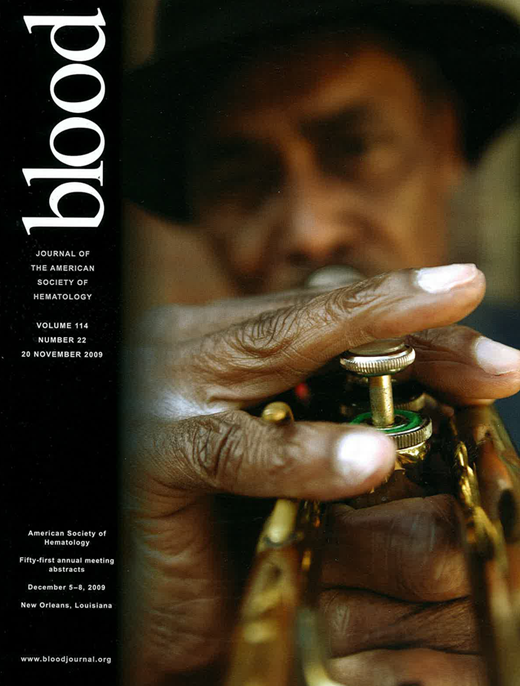Abstract
Abstract 4860
Our flow cytometry laboratory processed 38 bone marrow (BM) samples (24 males and 14 females) from patients with Myelodisplasic Syndrome diagnosis, from January 2008 to May 2009. Upon examination, most BM smears corresponded with an hypercellular bone marrow and increased intermediate and immature cells. All patients classified according to OMS for Myelodisplasic Syndromes. Twenty-four (n=24) patients (65%) presented RA, five (n=5) patients (13%) RAEB-1, one (n=1) 1% presented RARS, and eight (n=8) patients (21%) classified as RAEB-II. Cytogenetic result analyses for all patients classified according with the Index Prognostic Standard Score (IPSS). Twenty-five (n=25) patients or 66% corresponded with a good cytogenetic risk; seven (n=7) or 20% corresponded with an intermediate risk and six (n=6) or 14% with poor risk. Cell cytometry results corresponded with increased immature cells. In 20 patients, the DR/CD34 average 27,29% (range 0-67); in 24 patients, the DR/CD33 average 31,80% (range 6-100); in 29 patients, the DR/CD117 average 18,89% (range 0-43); in 7 patients, the CD33/CD34 average 22,14% (range 0-50); in 5 patients, the CD38 average 47,60% (range 32-61); in 4 patients, the BCL2 average 21,75% (14-26 and in 3 patients, the DR/CD64 average 44,33% (range 30-60). All patients with high average of DR/CD64 classified as CMML. Patients with RAEB-II diagnosis classified as MDS in transformation. Most patients displayed 10% CD34+ values higher than normal human average. We conclude the cytometry is an important tool in the differential diagnosis of MDS.
No relevant conflicts of interest to declare.
Author notes
Asterisk with author names denotes non-ASH members.

